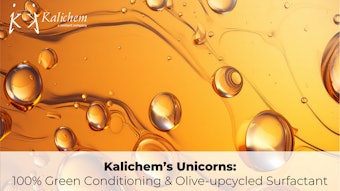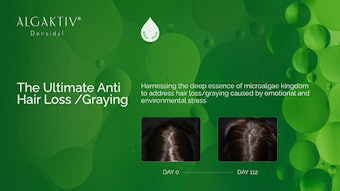
Fermentation is an enzymatically controlled process that breaks down energy-rich compounds, e.g., carbohydrates, into other, simpler substances such as carbon dioxide and alcohol, or an organic acid. The word fermentation comes from the Latin fervere, which means to “boil” or “glow.” This is because effervescent bubbles are usually observed during the process; for instance, when alcohol is fermented to produce carbonic acid gas. This is how beer, wine, bread, kimchi, yogurt and other foods are created.
Microorganisms such as yeast and bacteria usually play a role in fermentation, as their enzymes decompose organic compounds. While humans derive energy from the oxidation of carbohydrates, which turns into carbon dioxide and water, microbes act by anaerobic respiration, so they cannot fully decompose organic compounds. Instead, they produce different kinds of organic compounds that have less energy. Thus, through the process of fermentation, organic compounds are decomposed to produce different organic compounds and provide small amounts of energy to the microbes.
As noted, enzymatic fermentation can result in the production of organic acids, such as malic, fumaric, citric and others. These are well-known Krebs cycle intermediates that help provide quick energy substrates to the energy-producing mitochondria of skin cells. They also are known to chelate essential minerals such as calcium, magnesium, zinc, copper and others to thereby improve bioavailability and decrease toxicity in skin care applications.
While fermentation is perhaps best known for its application in food and beverage production, the process has gained interest from the cosmetics industry as a natural means to derive skin care ingredients. In fact, according to Research and Markets, the fermentation chemicals market overall was valued at US $47.4 billion in 2016, and is expected to reach $66 billion by 2022. The firm also notes the cosmetics and pharma industries are the major factors driving the growth of the global fermentation chemicals market.1 This article reviews recent examples of fermentation ingredients in cosmetics.
Fermentation vs. Decomposition
First, it is important to note that fermentation is different from decomposition. Fermented food, for example, is edible and nutritious whereas decomposed food can cause poisoning. Putrefactive (decomposing) bacteria and ferment bacteria are different types. Also, the activities of putrefactive bacteria can produce malodors due to the production of amines and hydrogen sulfide.
Putrefactive bacteria come to exist without exception when organic compounds are in the natural environment. However, fermentation is generally triggered under specific conditions. For example, Chinese cabbage would spoil with no special treatment but it does not decay with salt treatment. Salt prevents putrefactive bacteria from activating and helps to stimulate ferment bacteria. When salt-treated cabbage is stored in an appropriate container at the right temperature, the ferment bacteria turn it into kimchi.
As such, specific conditions and environment are the main cause of fermentation. Another example is in the case of milk. Milk spoils with a strong, foul smell under normal temperatures due to the activity of putrefactive bacteria. However, milk can be fermented to become cheese when it is treated with specific enzymes under certain conditions. The cheese-making process creates a different odor from the smell of amine and hydrogen sulfide.
As noted, fermented foods are edible; in fact, many are known for positive health benefits. Kimchi, for example, contains the healthy bacteria Lactobacillus, which is reported to aid in digestion and even prevent yeast infections. Some studies have show the fermented cabbage has compounds that may prevent the growth of cancer, among other benefits.2-5
Anti-aging: Sake
Perhaps the most prominent product that launched the fermented skin care trend, and made a household name for itself, was Procter & Gamble’s Japanese SK-II line. The story of SK-II began at a sake brewery in Japan, where scientists noticed elderly workers had wrinkled faces but extraordinarily soft and youthful-looking hands. Their hands were in constant contact with the sake fermentation process. After five years of research, and the careful examination of more than 300 types of yeast, the company developed Pitera (INCI: Galactomyces Ferment Filtrate), an ingredient that would become the cornerstone of the SK-II line.
Indeed, the company’s signature Facial Treatment Essence is 90% Pitera.6 This by-product of yeast fermentation contains a blend of vitamins, amino acids, minerals and organic acids to protect, rejuvenate and renew the skin. Anecdotally, the Facial Treatment Essence product has been called the “Holy Water” or “Miracle Water.”7, 8
Demand from cosmetics and pharma is a major driver for growth in the global fermentation chemicals market.
Skin Whitening: Melanoston
Cosmetics company Charmzone reported on the reduction of melanogenesis by yeast-extracted melanoston. According to their work, published in the Korean Agricultural Science Digital Library, while melanoston was not a tyrosinase inhibitor, its application to B16 melanoma cell culture media decreased intracellular tyrosinase activity by more than 30%.9
Skin Metabolism: Zyen, Zyen-γ and 86 Plants
Another notable South-Korean fermentation brand is Su:m37° by LG Household and Health Care (LG).10 Meaning “respiration” in Korean, “su:m” refers to the skin’s respiration and 37° represents the optimal temperature for fermentation.
As is well-known, during fermentation, microorganisms break down the molecular structure of substances—which according to LG, are reduced to a size that can penetrate the skin and rapidly boost its natural defenses. Therefore, the brand name “Su:m 37°” captures the science behind naturally fermented cosmetics, while the company aims to capture this natural fermentation niche market in skin care.11
LG explains that 86 types of plants are gathered every season, and their roots, stems, leaves, flowers, seeds and fruit are allowed to ferment at 37°C under controlled conditions. The natural fermentation laboratory is located within a 10-km radius in Gangwon-do, without large-scale commercial facilities and where there is clean water and air. Various fermentation tanks made from oak, cedar and pottery are placed on black charcoal, which covers the floor of the fermentation room. Humidity and temperature are controlled but other than that, it just takes time—1,102 days, to be precise.12
The extracted solutions are then moved to a storage area and maintained at the constant temperature of 37°C, where they reportedly are left to breathe to the melody of a music box and ferment dozens of times over. This process also produces Zyen and Zyen-γ, fermented substances that contain amino acids, natural organic acids and antioxidants. These materials stimulate the skin’s metabolism without causing irritation, giving skin a healthy and smooth appearance.
Antioxidant and De-tox: Soybean
In 2010, AmorePacific also developed a fermentation-based skin care brand, Hyosia, derived from fermented soybeans.13 The basis for this brand was the discovery of a unique isoflavone, which the company trademarked CureBEAN. The ingredient demonstrated antioxidant functionality while effectively removing toxins from the skin, normalizing the skin’s regeneration mechanism.
Further Fermented Brands
Several other fermentation brands have been developed and are worth noting.
Japanese brands: Dr. Ohhira’s Probiotic Magoroku Skin Care, Ozeki Sake Rice Skin Care, KURAHITO Skin White, Rice Beauty and Hakutsuru Rice Beauty
Korean brands: Miev, Skinfood’s Daal Story, Sooryehan’s Hyo line, Saimdang and Sulwhasoo
American brand: Immunocologie
Symbiotic with Skin
Fermented cosmetics have been found to act symbiotically with skin. While intestines produce enzymes, the skin does not. So the fermentation process can be used to break down the molecular structure of ingredients and make the nutrients more concentrated, and more easily and rapidly absorbed. It can also produce skin-loving amino acids and antioxidants.14
Furthermore, fermentation mimics the skin’s cell functions and supports the skin without disrupting its natural processes, so it is less likely to cause sensitivity. Sugar and fruit acids, which are abundant in fermented ingredients, can help to moisturize, too. Thus, fermented actives provide protection for the skin and strengthen its metabolism to make it stronger and healthier.14
Fermented Cosmetics: The Trend of Tomorrow
The cosmetics industry is always looking for innovation, and fermentation products—which are well-established in Korea—will likely become the world trend of tomorrow. While mankind has revived the ancient yet scientifically advanced concept of fermentation, it, in turn, can reinvigorate the glow and texture of skin, among other benefits.
References
- 1. http://www.researchandmarkets.com/reports/3719659/global-fermentation-chemicals-market-size-market#pos-0
- 2. http://www.health.com/health/article/0,,20410300,00.html
- 3. http://online.liebertpub.com/doi/abs/10.1089/jmf.2013.3083
- 4. http://www.sciencedirect.com/science/article/pii/S095816691630266X
- 5. http://www.fasebj.org/content/28/1_Supplement/LB405.short
- 6. http://www.sk-ii.com/facial-treatment-essence/texture-refinement/sk-ii-facial-treatment-essence/PG_00737052606279.html
- 7. http://www.sephora.com/facial-treatment-essence-P375849
- 8. http://www.beautyparler.ca/2010/02/holy-water-of-skincare-sk-ii-facial.html
- 9. http://agris.fao.org/agris-search/search.do?recordID=KR2005009496
- 10. http://www.sum37.jp/eng/brand/sum37_2.jsp
- 11. https://hopeinablog.wordpress.com/2010/12/02/introducing-sum-37/
- 12. http://www.lgcare.com/english/news/news01.jsp?bid=91.0&recno=80
- 13. http://www.trademarkia.com/hyosiah-white-curebean-85435654.html
- 14. http://www.refinery29.com/fermented-beauty-products#slide











